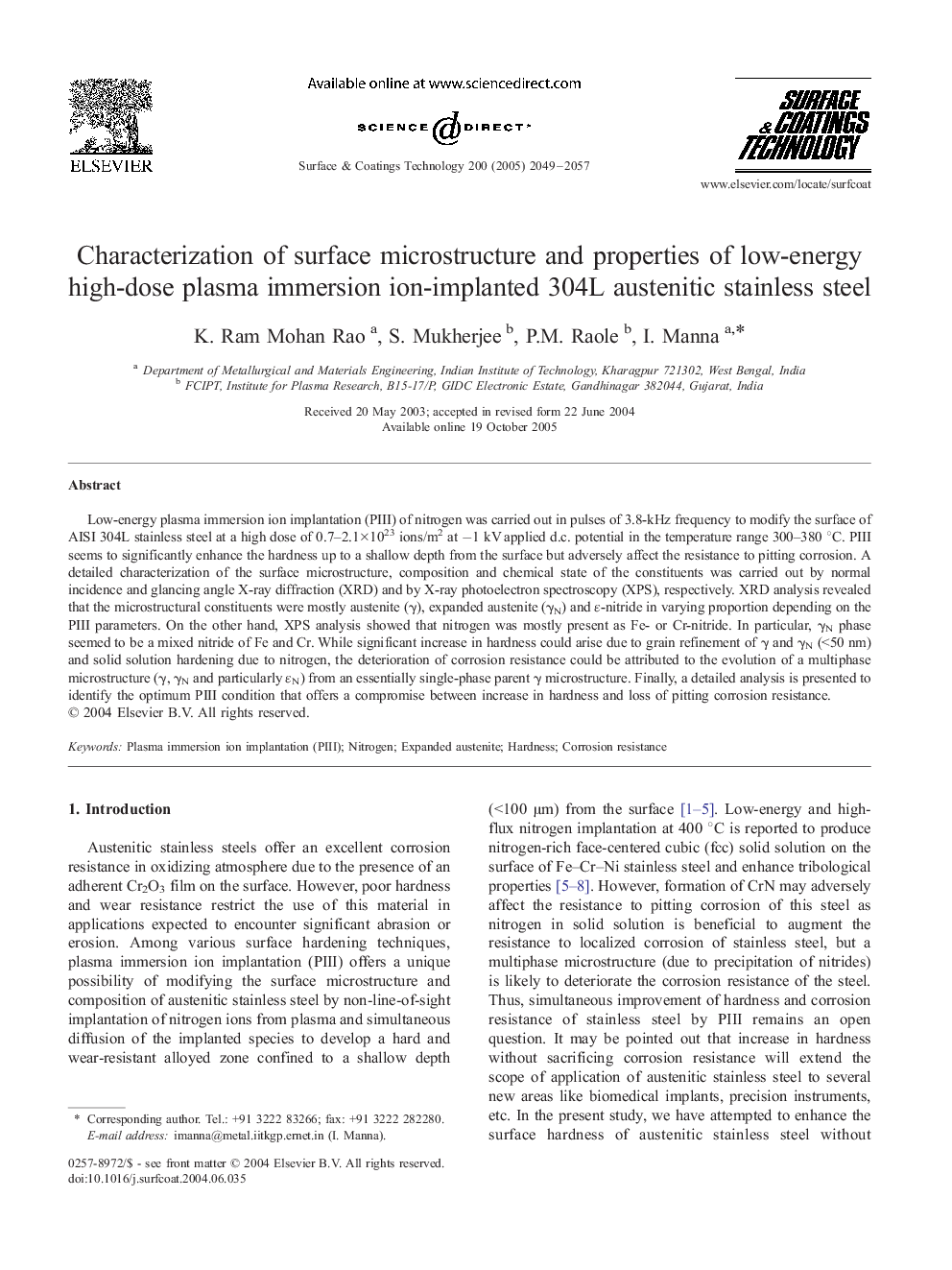| Article ID | Journal | Published Year | Pages | File Type |
|---|---|---|---|---|
| 1663411 | Surface and Coatings Technology | 2005 | 9 Pages |
Low-energy plasma immersion ion implantation (PIII) of nitrogen was carried out in pulses of 3.8-kHz frequency to modify the surface of AISI 304L stainless steel at a high dose of 0.7–2.1×1023 ions/m2 at −1 kV applied d.c. potential in the temperature range 300–380 °C. PIII seems to significantly enhance the hardness up to a shallow depth from the surface but adversely affect the resistance to pitting corrosion. A detailed characterization of the surface microstructure, composition and chemical state of the constituents was carried out by normal incidence and glancing angle X-ray diffraction (XRD) and by X-ray photoelectron spectroscopy (XPS), respectively. XRD analysis revealed that the microstructural constituents were mostly austenite (γ), expanded austenite (γN) and ɛ-nitride in varying proportion depending on the PIII parameters. On the other hand, XPS analysis showed that nitrogen was mostly present as Fe- or Cr-nitride. In particular, γN phase seemed to be a mixed nitride of Fe and Cr. While significant increase in hardness could arise due to grain refinement of γ and γN (<50 nm) and solid solution hardening due to nitrogen, the deterioration of corrosion resistance could be attributed to the evolution of a multiphase microstructure (γ, γN and particularly ɛN) from an essentially single-phase parent γ microstructure. Finally, a detailed analysis is presented to identify the optimum PIII condition that offers a compromise between increase in hardness and loss of pitting corrosion resistance.
